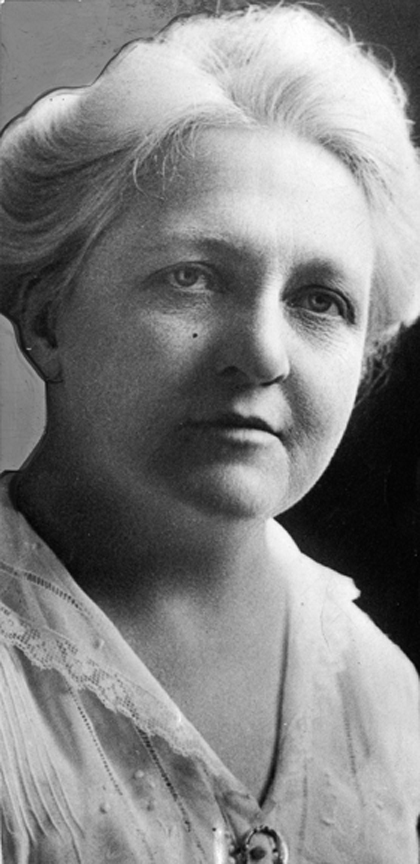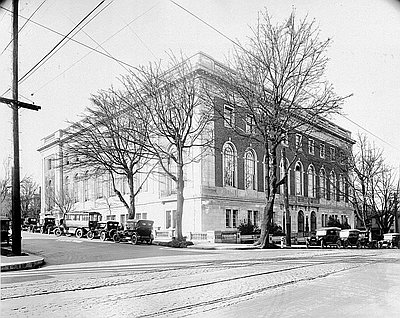Mary Frances Isom (February 27, 1865-April 15, 1920) directed Portland's largest library for almost twenty years, beginning in 1901. Shortly after completing her library training at Pratt Library School in New York, she moved to Portland to catalog a collection of over 8,000 volumes bequeathed by John Wilson to the private, subscription-based Library Association of Portland. Wilson was a local resident whose donation served as the foundation for special collections that are still available at the Central Library. Isom took over as head of the library a few months after she arrived, and she oversaw its transition to a free, public library.
Isom was one of many women who worked nationwide during the late nineteenth and early twentieth centuries to create systems of tax-supported, free public schools and libraries. After a determined lobbying campaign by the Oregon Federation of Women's Clubs, the Oregon Legislature passed a public-library bill that allowed municipalities to levy property taxes for the purpose of establishing free libraries. Portland approved such a tax on July 18, 1901.
During the 1903 legislative session, Isom successfully lobbied to amend the 1901 law by allowing counties to levy the same kinds of taxes that cities could, thereby opening Portland's library collections to county residents. Isom believed that libraries were institutions central to democracy, saying at the 1913 opening of the new Multnomah County Central Library building: "The public library is the people's library, it is maintained by the people for the people."
Isom also drafted House Bill 6 to establish the Oregon Library Commission, which gave support to schools and communities around the state that wished to establish or strengthen free, public libraries. Governor George Chamberlain signed the bill into law, and Cornelia Marvin Pierce became the first state librarian on May 25, 1905.
During World War I, Isom was criticized by the public for not pressuring her assistant, M. Louise Hunt, to buy war bonds. Hunt was a pacifist, and Isom maintained that she was entitled to act on her beliefs. In fall 1918, Isom traveled to France, where she spent six months establishing libraries in hospitals and camps where injured soldiers were being treated and finishing their service. After returning to Portland, she resumed her work as head librarian at the Multnomah County Library. She also continued to serve on the Oregon Library Commission until her death in 1920.
Isom adopted a daughter, Bernice, and hosted every-other-Sunday salons in a house she built on Marshall Avenue. She also owned a cottage, Spindrift, designed by Albert E. Doyle and located on the Oregon Coast near Neahkahnie Mountain.
Further reading:
Jim Scheppke, "The Origins of the Oregon State Library," Oregon Historical Quarterly 107:1 (Spring 2006): 130-140.
Mary E. Kingsbury, "'To Shine in Use': The Library and War Service of Oregon's Pioneer Library, Mary Frances Isom," Journal of Library History 10:1 (January 1975): 22-34.
Written by Eliza Canty-Jones, © Oregon Historical Society, 2007.

